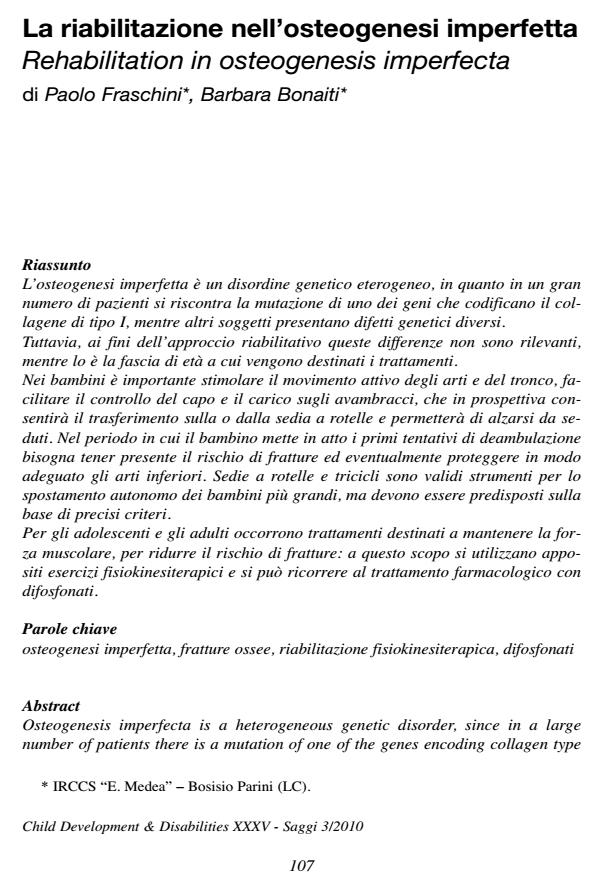Rehabilitation in osteogenesis imperfecta
Journal title CHILD DEVELOPMENT & DISABILITIES - SAGGI
Author/s Paolo Fraschini, Barbara Bonaiti
Publishing Year 2012 Issue 2010/3
Language Italian Pages 6 P. 107-112 File size 55 KB
DOI 10.3280/CDD2010-003018
DOI is like a bar code for intellectual property: to have more infomation
click here
Below, you can see the article first page
If you want to buy this article in PDF format, you can do it, following the instructions to buy download credits

FrancoAngeli is member of Publishers International Linking Association, Inc (PILA), a not-for-profit association which run the CrossRef service enabling links to and from online scholarly content.
Osteogenesis imperfecta is a heterogeneous genetic disorder, since in a large number of patients there is a mutation of one of the genes encoding collagen type 1, while others have different genetic defects. However, for the purposes of the rehabilitation these differences are not so relevant as the age for which treatments are meant. In the children it is quite important to stimulate the active movement of the limbs and the trunk, to help the control of the head and the load on the forearms, which will allow in the future the transfer to or from a wheelchair and to get up from sitting. When the child first attempts to walk, it must be kept well in mind the risk of fractures and therefore protect the lower limbs appropriately. Wheelchairs and tricycles are valid devices for moving independently of older children, but they must be equipped on the basis of precise criteria. Teens and adults require treatments designed to maintain muscle strength, to reduce the risk of fractures: this is done using specific physiokinesiterapic excercises and pharma treatment with diphosphonates.
Keywords: osteogenesis imperfecta, bone fractures, rehabilitation, physiokinesiterapic excercises, diphosphonates
Paolo Fraschini, Barbara Bonaiti, La riabilitazione nell’osteogenesi imperfetta in "CHILD DEVELOPMENT & DISABILITIES - SAGGI" 3/2010, pp 107-112, DOI: 10.3280/CDD2010-003018